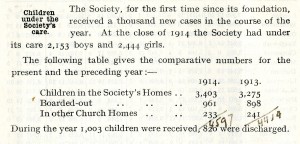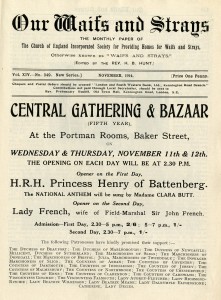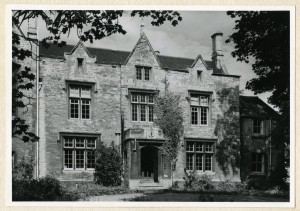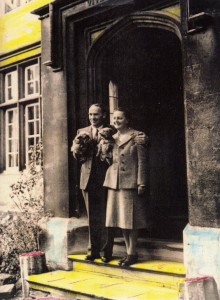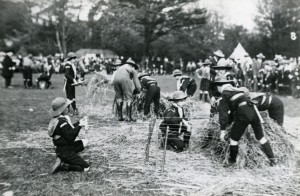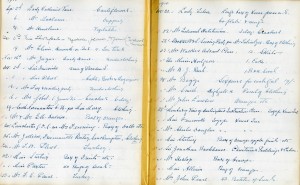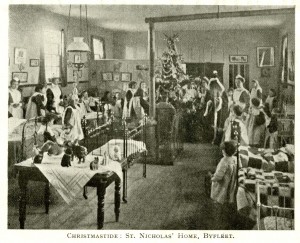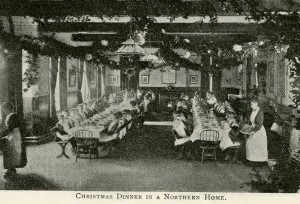The First World War had an immediate impact on The Children’s Society (then known as the Waifs and Strays Society). According to our Annual Report for 1914, for the first time in its history the Society took in over 1000 children, partly as a direct consequence of the outbreak of war. (Click the image below to see a bigger version.)
Despite fundraising events coming to an abrupt end when war was declared, the Society was not deterred, and it was determined to play a useful part in helping towards the war effort. The Society’s philosophy was
we do not throw ourselves today into “the fighting line” – it is not our place – but we do offer our experience, gained during many years, as a valuable asset “at the base,” – where women’s sorrows and children’s wants are crying out. Our gates are always open to all those who knock at them in real need, and … our door-bell … has been rung incessantly and with intense urgency within the last few weeks.
The nation was in shock, but it was not long before everyone was back at work again, with an overwhelming feeling that every one of the efforts must in some way be linked to the war. So, rather than dances and fetes (such “frivolous forms of entertainment” were deemed inappropriate in the circumstances) more sober meetings and gatherings, and sales of work continued and provided much needed funds for the Society.
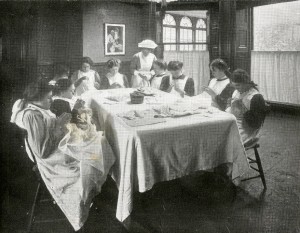
The funds raised proved vital as more and more men joined up, leaving increasing numbers of children without guardians. The rise in admissions and the increase in the Society’s costs caused concern, but much good work was done by the Society’s War Emergency Fund which enabled “a really substantial start towards meeting our new obligations.”
Here are a couple of letters we received from supporters in 1914, and which were sent to the editor of our supporter magazine ‘Our Waifs and Strays’.
Dear Sir, – I herewith enclose £5 as a donation to the War Emergency Fund, but I wish to be kept ‘Anonymous’. I have foregone my holiday this year on account of the war, and send you what I have saved in consequence.
Dear Sir, – I enclose postal order for 10s., being a subscription to the funds of your Society from my sister and myself. We are concerned lest, in the necessary demands made by the War Fund, such charities as yours, which are already established and in working order, should suffer. We therefore send part of our subscription to your fund.
The following are just some of the schemes used to raise money for the War Emergency Fund:
The organisation of the Society’s Pageant, small Sales of Work, Meetings, etc.
The Issue of special small collecting purses.
The sale of the Society’s “poster-stamps”.
The organisation of house-to-house collections or special local appeals.
The arranging of “Pound Days” (to provide food and clothing for the inmates of the Homes.
The issue of collecting-boxes, to be placed at church doors, or in shops, or distributed to people for collecting amongst their friends, or for their own weekly donations.
(Click the image above to see a bigger version.)
Despite the war the Society decided it would go ahead with its annual Bazaar. Instead of selling what may be called ‘frivolities’, useful articles, “particularly garments for wounded and convalescent men, for destitute families”, and “for the children in our Homes” would be sold instead. Many ordinary people contributed items, and in some cases made items to be sold, and acted as sales people for the Society, but that’s a story for another post!

